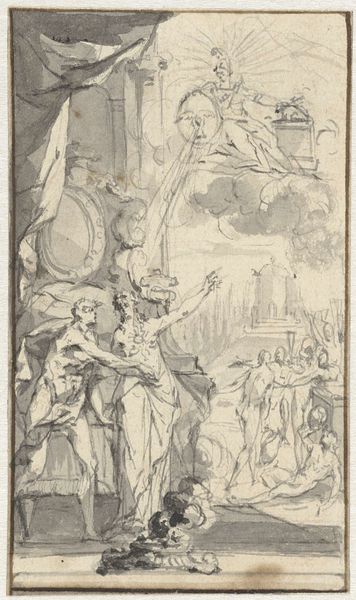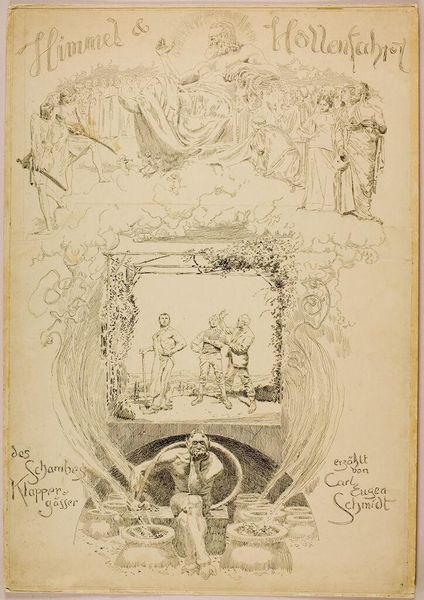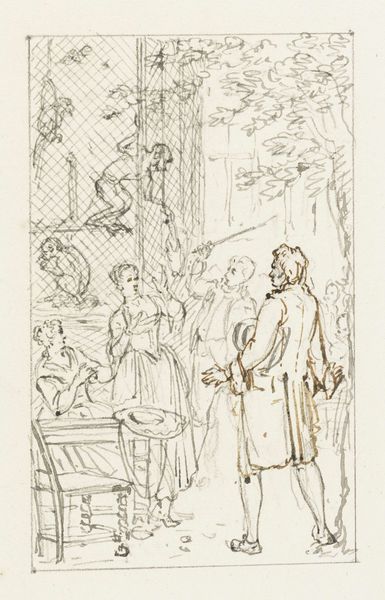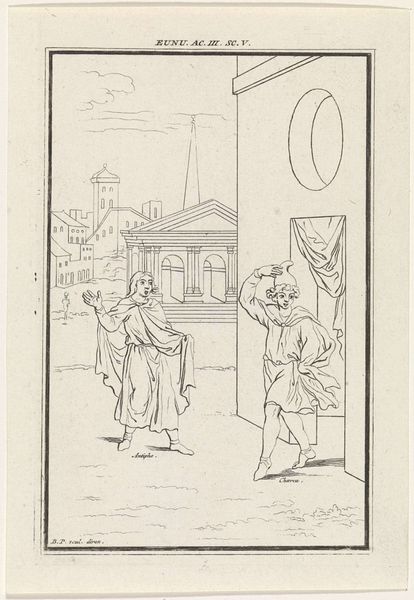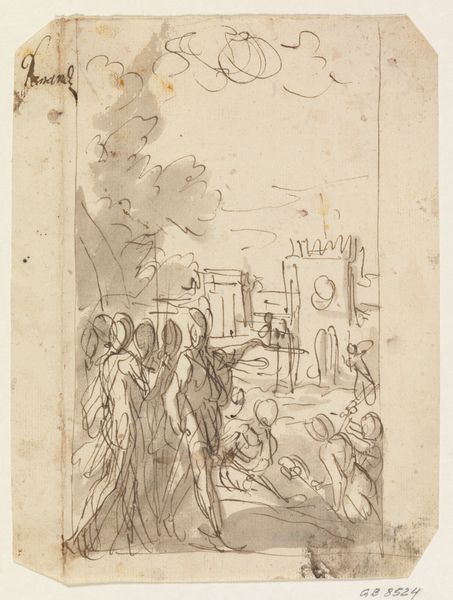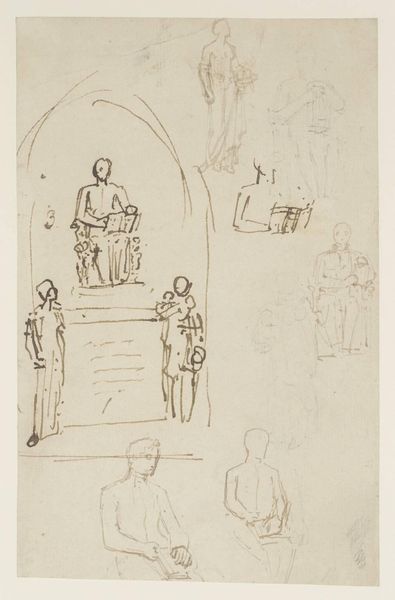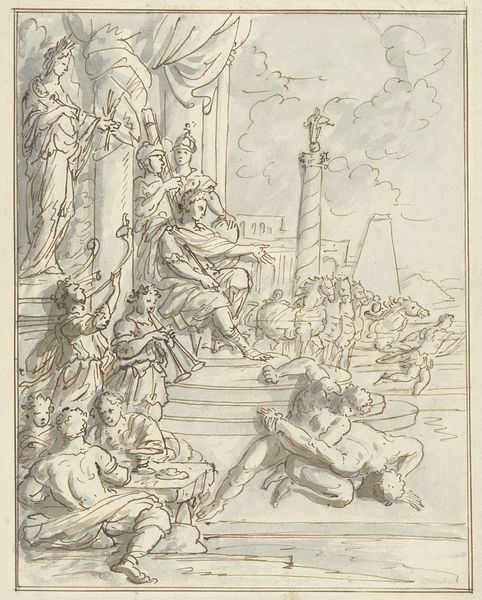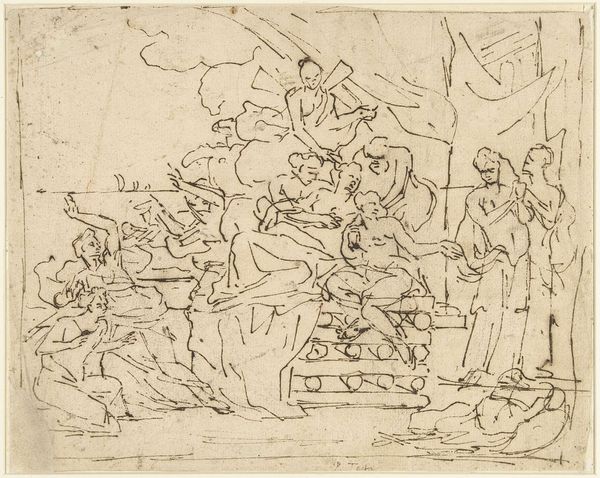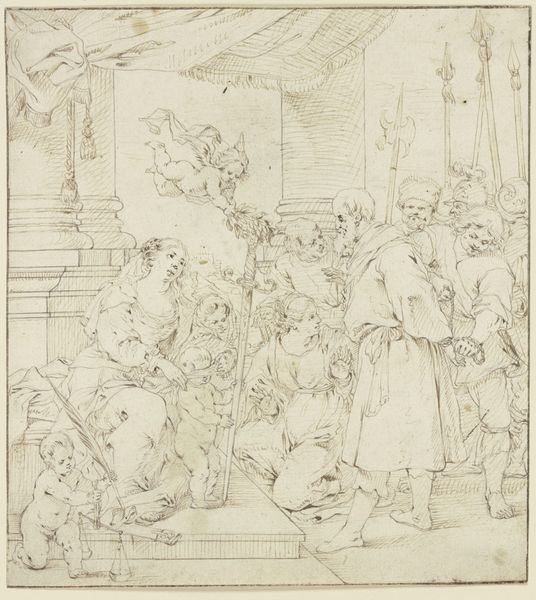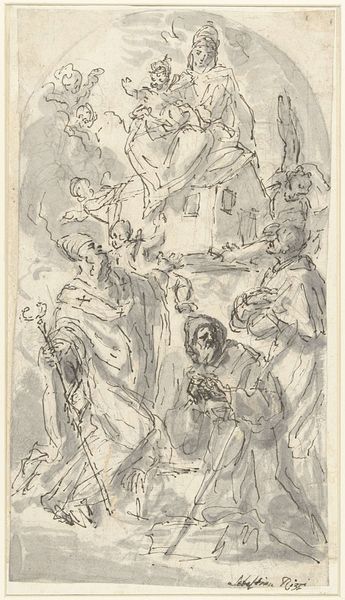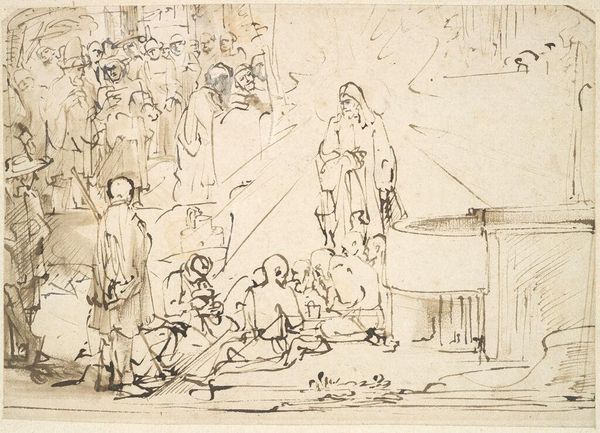
drawing, ink, pen
#
drawing
#
ink drawing
#
narrative-art
#
pen sketch
#
figuration
#
ink
#
classicism
#
pen
#
genre-painting
Dimensions: height 539 mm, width 306 mm
Copyright: Rijks Museum: Open Domain
Curator: Here we have Johannes van Dregt's pen and ink drawing, "Figuren bij een grafmonument," which roughly translates to "Figures at a Grave Monument", believed to have been made between 1747 and 1807. What are your initial thoughts? Editor: It strikes me as oddly cheerful given the subject matter! The composition is heavily divided, the ethereal upper portion seeming detached from the earthly scene below. There's a real interplay between the solidity of the monument and the almost whimsical line work above. Curator: Indeed! This division can be examined through the lens of Classicism, prevalent at the time. We see the earthly figures rendered with a sense of realism while the allegorical figures above adopt idealized forms. It presents a stark contrast in materiality: a physical monument against heavenly iconography. Editor: Looking closely at the monument's inscription, and knowing such monuments were often commissioned for public spaces, doesn't this work act as a form of social commentary as well? Who are these figures gathered around, and what stories are being preserved? Curator: It's difficult to discern without more context. However, observe how van Dregt uses contrasting lines – loose and flowing above versus more structured lines delineating the figures. Semiotically, the radiating lines emanating from the heavens suggest divine significance or influence. It provides a structure to how one views morality and death. Editor: And note the deliberate blurring of lines. There are two clear sections, but no heavy boundary lines: This encourages the viewer to compare and integrate heaven and earth, the solid and the fluid, the lasting and the temporary, Curator: The interplay of heaven and earth emphasizes the complex relationship between public memory, commemoration, and how it shapes our values as a community, an echo of Classicism! Editor: So even within a seemingly simple drawing, the careful juxtaposition of style, materiality, and context allows for the reconstruction of some kind of tangible experience. Thank you for guiding me through it. Curator: My pleasure. It highlights how visual syntax informs the values of its historical context, and continues to influence us today.
Comments
No comments
Be the first to comment and join the conversation on the ultimate creative platform.
